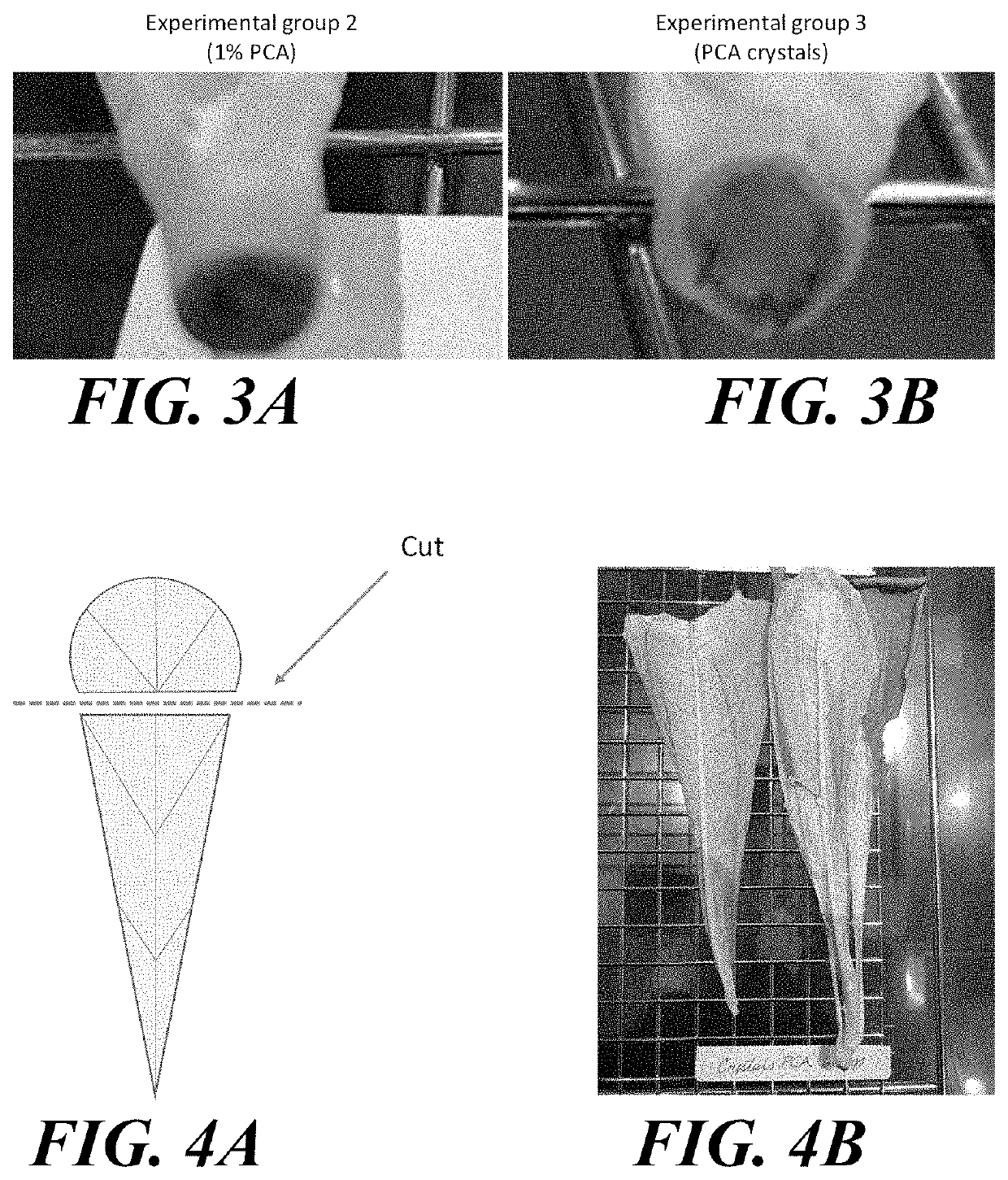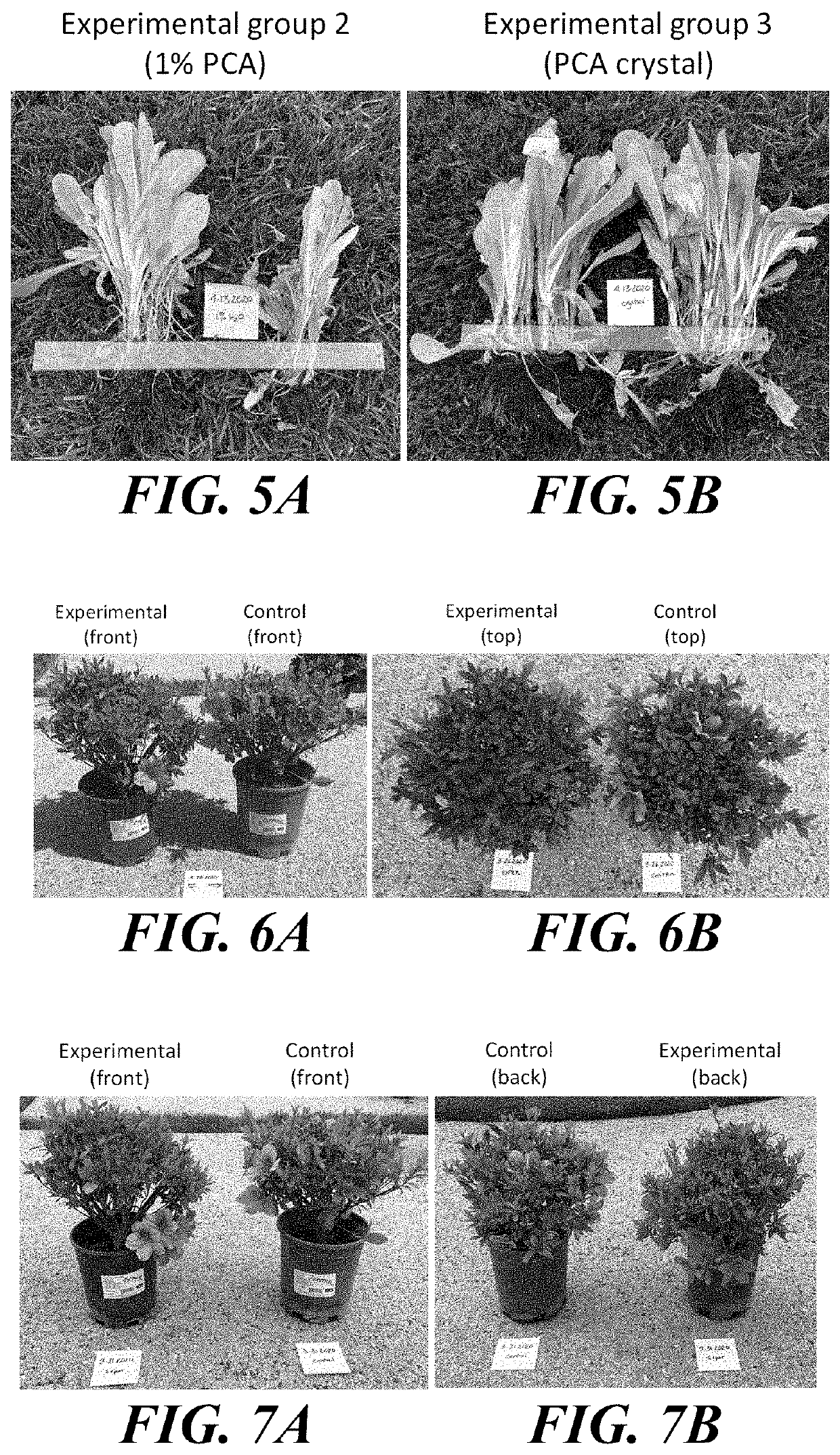Fertilizer compositions and plants containing protocatechuic acid, and uses thereof
a technology of protocatechuic acid and fertilizer composition, which is applied in the field of fertilizer compositions, can solve the problems of growing societal reluctance to accept gmo food, and achieve the effects of less browning, enhanced plant growth, and greater pest resistan
- Summary
- Abstract
- Description
- Claims
- Application Information
AI Technical Summary
Benefits of technology
Problems solved by technology
Method used
Image
Examples
example 1
Effect of Protocatechuic Acid on Lettuce
[0038]This example compares the effect of treating the soil adjacent to lettuce seeds with protocatechuic acid (PCA) at the time of seeding.
Experimental and Control Groups:
[0039]A commercial plant box as shown in FIG. 1A was used for the experiment. The bottom one half was filled with sandbox sand, and the top layer was filled with six inches of non-fertilized soil. The level of the soil was four inches below the top of the container. The plant box was partitioned into three sections with physical barriers in between, from the top of the soil to the bottom of the plant box, as illustrated in FIG. 1B.
[0040]A single straight line of 0.25-inch-deep trough was formed in each section. Then, lettuce seeds were placed in the trough according to the methods laid out in Table 1 below. Each section was watered daily with tap water.
TABLE 1Treatment of each section.NamePositionTreatmentExperimentalLowerLettuce seeds were coated with PCA crystals bygroup 1...
example 2
Effect of Protocatechuic Acid on Red Azaleas
[0052]This example examines the effect of protocatechuic acid (PCA) on flowering of red azaleas.
[0053]In one of the two azalea plants (red bird variety), small amount of PCA crystals were placed around the stem, and both were watered daily. The plant treated with PCA bloomed in three weeks, and the other plant bloomed in seven weeks. The plant treated with PCA flowered more than twice as fast.
example 3
Effect of Protocatechuic Acid on Pink Azaleas
[0054]This example examines the effect of protocatechuic acid (PCA) on flowering and sprouting of pink azaleas.
[0055]Two pots of pink azaleas similar in width and height were used for this example, as shown in FIGS. 6A and 6B. In the experimental plant, small amount of PCA crystals were placed around the stem, and both plants were watered daily. Approximately five weeks after placing PCA crystals in the experimental pot, the experimental plant started to bloom before the control plant did, and had more flowers blooming than the control plant, as shown in FIGS. 7A and 7B. Approximately six weeks after placing PCA crystals, the control plant almost completely blossomed, but the experimental plant had many more buds on the top yet to flower. Approximately seven weeks after placing PCA crystals, the experimental plant continued to flower and had more buds and taller shoot of stems than the control, while the control plant wilted. In sum, the ...
PUM
| Property | Measurement | Unit |
|---|---|---|
| molality | aaaaa | aaaaa |
| molality | aaaaa | aaaaa |
| volume | aaaaa | aaaaa |
Abstract
Description
Claims
Application Information
 Login to View More
Login to View More - R&D
- Intellectual Property
- Life Sciences
- Materials
- Tech Scout
- Unparalleled Data Quality
- Higher Quality Content
- 60% Fewer Hallucinations
Browse by: Latest US Patents, China's latest patents, Technical Efficacy Thesaurus, Application Domain, Technology Topic, Popular Technical Reports.
© 2025 PatSnap. All rights reserved.Legal|Privacy policy|Modern Slavery Act Transparency Statement|Sitemap|About US| Contact US: help@patsnap.com



